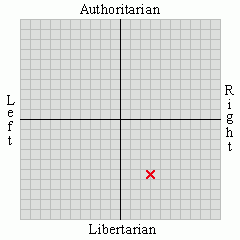To it, I'll add another observation. Schools -- both in the U.S. and in other industrialized nations -- concentrate a lot on the concept of "getting it right." Provide the right answer to a question, and you are rewarded with a good grade; provide the wrong answer and you are punished with a bad grade. And we tend to think of math and science as "objective" sorts of mental disciplines -- there is only one correct answer to the math problem "What is 5 + 3," for instance. But Savage is absolutely right when he says that "...being wrong can be just as interesting as being right." At a certain point, the process of learning is not necessarily advanced by providing the correct answer but rather by disproving a hypothesis. And ultimately, science is less about proving what is real but rather about proving what is most likely to be true and distinguishing that from things that are provably untrue.
At early grades, of course, there are objective facts, basic math and mathematical theory. Students don't realize it when they learn algebra, but they are learning how to think using symbolic logic, how to understand how things relate to one another according to those inflexible rules. The step they never take is learning how to take those inflexible rules and apply them creatively. The same sorts of things happen in music -- musicians understand that music has a set of rules, found in the beats and measures of a time signature; found in the flats and sharps imposed on music by a key signature; found in the structure of a piece of music like the call-and-repeat pattern of twelve-bar blues. The same sorts of cumulatively more creative use of inflexible rules comes in to play in applied science. (It does in law, too.)
So here's one way science is tested:
The force of gravity applies to an object falling to earth:That's all good and fine. But students will learn the lesson infinitely better if they can climb to the roof of the school and drop stuff from it. Does a ten-pound bowling ball fall to earth faster or slower than a ten-ounce grapefruit? If so, why? And let the students figure out how to test what they think is true. The teacher would have to grade the project on its ability to demonstrate the validity or invalidity of the proposition under question.
A) Greater based on how close that object is to the center of the earth
B) Greater based on the mass of the falling object
C) Both A and B are true
D) Neither A nor B are true.
This would, of course, require the teacher to understand the scientific method and be able to apply it himself. But hopefully, most science teachers know this already. This would also require a teacher with a degree of mental flexibility, to put the textbook down and get the students to start using their brains. And isn't that what education is all about?







No comments:
Post a Comment